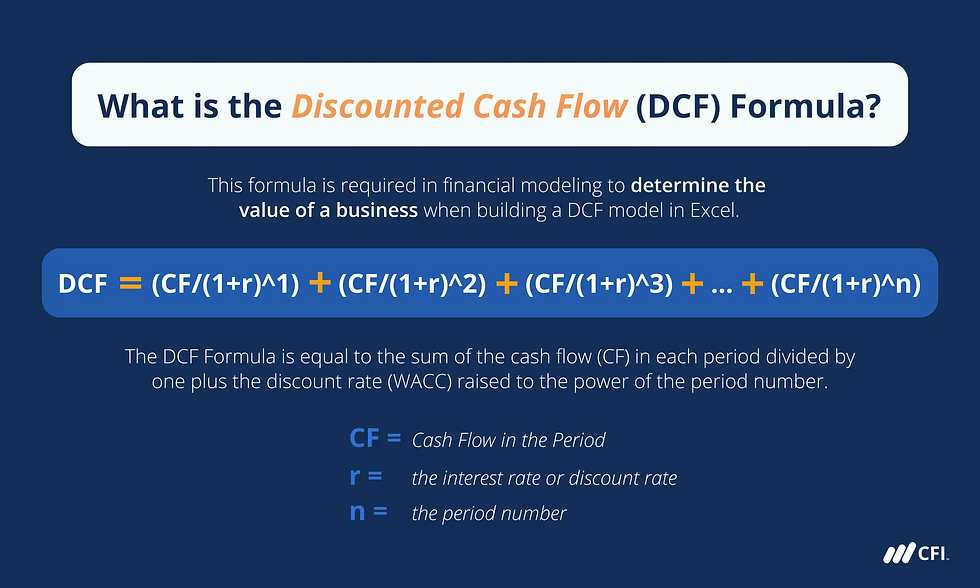How to Record Depreciation and Inventories on Published Accounts (33.3)
- Thiago Casarin Lucenti
- Nov 10
- 3 min read
Chapter 33 - Financial Statements
Learning Objective: To understand how depreciation and inventories are recorded on published accounts
Most assets decline in value overtime - specially tangible non-current assets. They do so for two main reasons:
Wear and tear through usage;
Technological change making assets obsolete.
Depreciation is a cost that needs to be recorded on the Statement of Profit or Loss yearly:
Each year when depreciation happens it will add to overhead expenses (impact on operating profits);
On the Statement of Financial Position the value of the asset will have depreciation subtracted from the total asset value (property, equipment, etc. will decrease) and the double-entry will be applied, usually, towards retained earnings.
How to calculate depreciation of non-current assets?

The Straight Line Method of calculating depreciation is the most common way of doing so.
(Original Cost of Asset - Expected Residual Value) / Expected Useful Life of the Asset.
Residual Value: how much the asset is expected to be worth it at the end of its expected useful life.

Let's look at an example:
A firm purchased 3 new computers at $3000/each;
At the end of 4 years computers are estimated to be sold for $200/each.
This information leads us to the following calculation:

For each of the four years of the useful life of these computers a depreciation charge of $2,100 will be made:

Such charges are included as overhead expenses on the firm's income statement;
On the statement of financial position depreciation is subtracted from the value of the computers (assets);
If each computer is sold for $300 (instead of $200) at the end of 4 years there will be a surplus of $300;
If they are scrapped at the end of 4 years, however, there will be a loss of $600 at the end of the fourth years.
Activity 33.9
Evaluation of the Straight Line Method:
It's one of the most common methods of calculating depreciation;
It can be inaccurate if mistakes are made when estimating values and length;
There are other methods of calculating depreciation which are more effective for assets that decrease in value faster in the first few years than on subsequent years (e.g. vehicles);
Maintenance and repairs are not considered in the depreciation calculation even though it impacts on the profitability of the asset.
Keep in mind, though, depreciation does not impact cash-flow:
If an asset is purchased for $5,000 cash outflow is recorded at the moment of payment;
Depreciation is not a cash payment only a method of spreading out costs;
Depreciation is classified as a non-cash expense on the income statement;
Depreciation reduced the book value of non-current assets on the balance sheet.
Finally, let's look into how inventories are recorded on the Statement of Financial Position:
Inventories can be recorded with their purchase cost (a.k.a. historical cost);
They can also be recorded with their net realizable value (NRV) which is the amount they can be sold for minus the CoS;
The method of recording is picked from whichever of the two methods give the lowest value.
How does NRV work?
Example:
A shoe shop buys 10 pairs of shoes from a supplier by $10/each;
At the end of the financial year 3 pairs of shoes remain unsold (out of fashion);
The shop believes it can now only sell it for $8/each pair (lower than the its cost);
The NRV of these 3 pairs is now only $24 and not $30 and therefore $6 should be immediately recorded as loss on the Statement of Financial Position.
NRV = ($8 - $0)*3 = $24
Example 2:
A furniture retailer has a dining table that has been in stock for six months; It was bought from the manufacturer for $60;
It has been damaged in the shop and needs a repair costing $20;
The shopkeeper believes that after the repair the table could be sold for $70;
The table should not be valued on the Statement of financial position at $70 as this assumes that a profit will be made and this is against conservatism;
It should not be valued at $60 as this ignores the fact that it is damaged;
The net realizable value is $70 – $20 = $50, and as this is less than the historical cost of the asset, this becomes its value on the Statement of Financial Position.
Activity 33.8
To-Do-List
Activity 33.10
Chapter 33 - Financial Statements







Comments